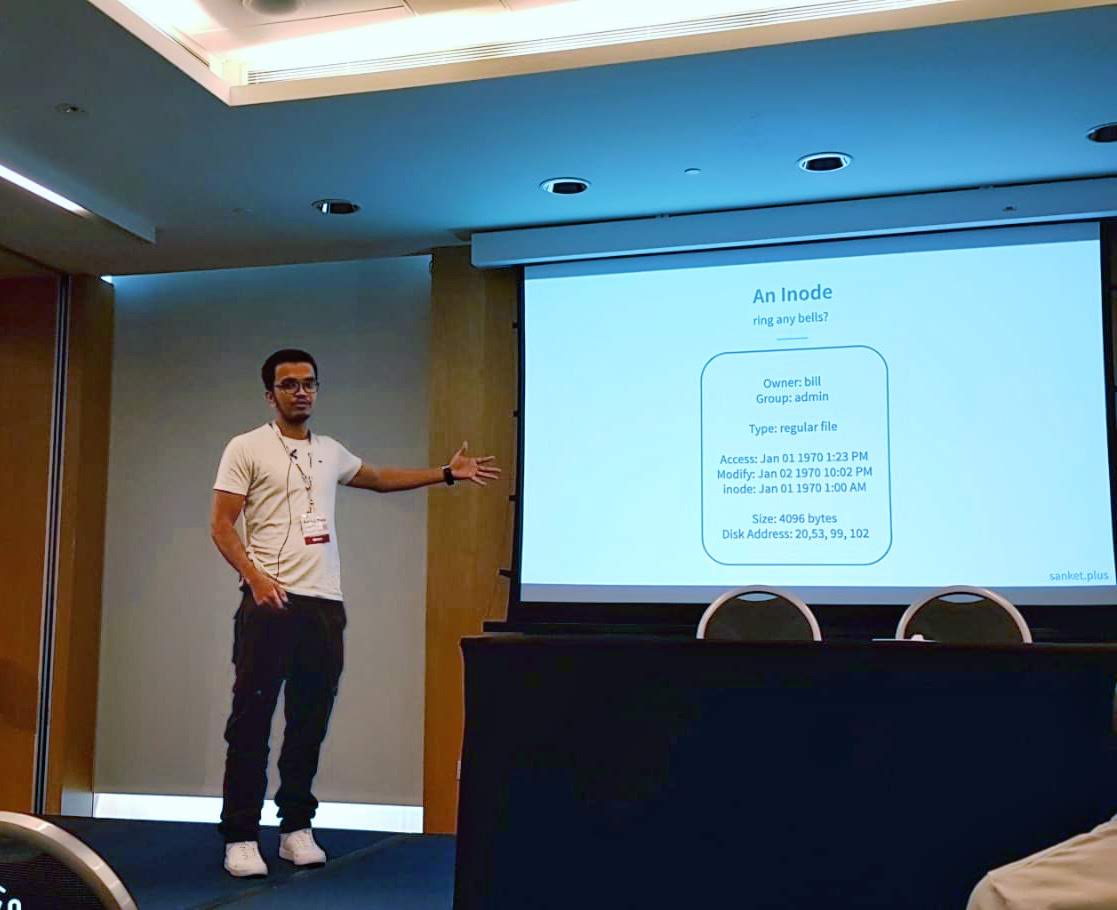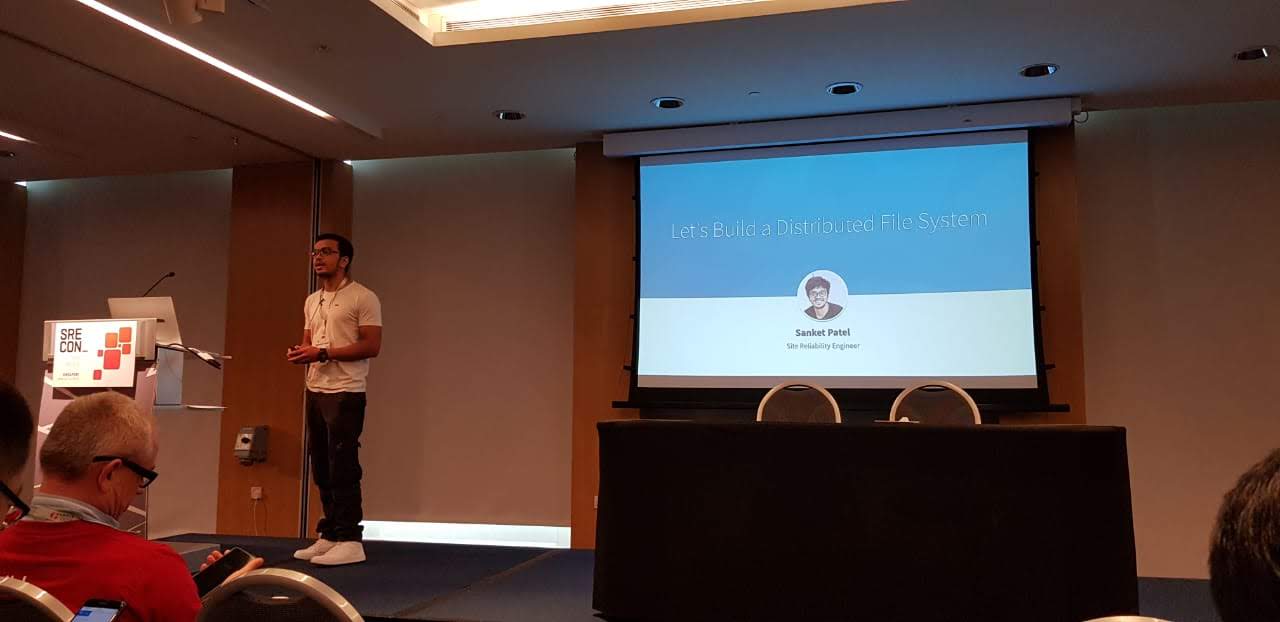In the first post on this blog, I wrote about a tiny distributed filesystem I made in python for educational purpose. This year, I had a chance to use it in a talk delivered at SRECon 19 Asia. The title was
Let’s Build a Distributed File System
The talk was listed under something called Core Principles track and Talks in this track will focus on providing a deep understanding of how technologies we use everyday function and why it's important to know these details when supporting and scaling your infrastructure. If I were to pull up abstract submitted to Usenix
Let’s explore something that we use and rely on every day. The file systems. Typical and distributed.
We first will look at a typical file system, the architectural components and how they all work together when you perform a read or write. We then will take those components and evolve that into a distributed file system architecture. While the architectures we’ll explore will not be of a specific file system, they will be generic enough to be relatable with many file system implementations that exist today.
We also will then implement a tiny distributed file system in Python to see all those components playing together in action. Please note that this will be a very simple, minimal example, not suitable for real usage. If you are a file system hacker, this session will be too basic for you.
Slides GitHub and Recording
Couple of images :)


